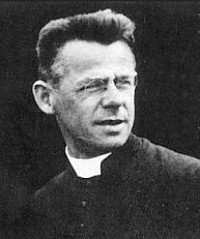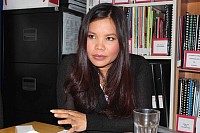Designing a Justice Summit
Introduction
In 2013, I was fortunate enough to visit Brophy Preparatory High School, a Jesuit College in Phoenix, Arizona. It was there that I learned about their Summit on Human Dignity, a two week social justice learning experience that involves the whole school community. Their mission statement is posted here.
“True to our Jesuit charism of the service of faith and the promotion of justice, the Brophy community continues its annual Summit on Human Dignity this year by focusing on our place in the world – our specific place: the city of Phoenix. While talk of social, economic, racial, and environmental justice can sometimes become abstract, Brophy seeks to commit itself through this Summit to living out our incarnational faith in an incarnational way. Just as God became man in Christ and was born into a specific time and place, we are called to find the ways that God wants to move in us and pour out His timeless love in the specific context of the greater Phoenix area in which we members of the Brophy community reside. In so doing, we are grateful for the collaboration and support of our many local partners who are participating in this Summit. Together, we hope to commit ourselves more deeply to the continual betterment of our city; strengthen our connections with others working for the common good here; and contribute to a more just, more equitable, and more loving Phoenix oriented toward the Catholic ethical imperative of the preferential option for the poor, and God’s will for the whole human family as we live the faith that does justice.”
Their mission statement presents the three steps of the Review of Life method developed by Cardinal Joseph Cardijn (1882-1967). The three steps are See, Judge, Act. Cardijn taught young workers how to see the injustice of the workplace, how to use their faith to process their experiences of work and life, and then how to plan actions that would lead to the transformation of people’s lives and of society.
What follows here is a justice summit designed as an interface between a Catholic secondary school’s religious education program and the culture of the school.
A justification
In his address to the participants in the 46th General Chapter of the De La Salle Brothers in Rome, Pope Francis said,
Dear spiritual children of John Baptist de La Salle, I exhort you to study and imitate his passion for the least and the discarded. In the furrow of his apostolic testimony, may you be protagonists of a “culture of resurrection”, especially in those existential contexts where the culture of death is prevalent. Never tire of going in search of those who find themselves in modern-day “sepulchres” of dismay, degradation, distress and poverty, in order to offer hope of new life. May a passion for the educational mission — which made your Founder a teacher and witness for many of his contemporaries — and his teaching still nourish your projects and your actions today.
Pope Francis spoke about the commitment “to build new ways to transform lifestyles” and about educating people in how “to pass from a closed to an open world; from a throwaway culture to a culture of care; from pursuing partisan interests to pursuing the common good.”
It is his vision of education that is part of the motivation for designing this project. In a very real sense, education is always about the future. It is about learning how to create a better future for all of creation. Education is about learning how to be God’s co-workers in completing creation: I learned this from some students who were leaders in the YCS (Young Christian Students) movement, which grew out of the YCW (Young Christian Workers) movement founded by Cardijn. While there is injustice in the world, creation remains incomplete.
When we educate people to be “protagonists of a culture of resurrection,” we engage in acts of restorative justice. The justice summit is an act of restorative justice because it conscientises the young to seek ways of offering “hope of new life” to those who are victims of injustice.
Cardijn’s method
Cardinal Joseph Cardijn (1882-1967) was a young seminarian when he knelt beside his dying father and vowed to God to work for the salvation of workers. Throughout his life as a priest, he sought to promote and enhance the lay apostolate. His enduring legacy to the Church has been the method of reflection and action that he taught to the leaders of the worker movement he established in the first half of the twentieth century.
Cardijn’s method, known by many as the Review of Life, has three steps: See, Judge, Act. They are the steps Cardijn worked through in his own life as he learned how to deal with situations in his own life that spoke to him of the disconnect between the temporal and eternal destinies he believed to be the “patrimony” of all people. He believed that all people are gifted by God with the grace needed to begin living their eternal destiny as they strove to achieve their temporal destiny.
See
When we become aware of the call to address a situation in our personal life or in society, the first step to be taken to ensure that we address the situation in the way that God intends, is to SEE the situation for what and how and why it is. Determining causes and effects — done through researching when and how the situation occurs — is a crucial part of this step. Every attempt should be made to avoid sharing opinions without addressing the facts. It is also important to address how the situation impacts on us not only physically, but also emotionally, intellectually, socially and spiritually. This step in the method can be summarised as three questions to be answered:
- What exactly happened? What was your action in response? (the facts)
- What caused this to happen and why? (the causes)
- How we’re people affected? (the consequences)
Judge
Having identified what is affecting you and others, then we have to determine the principles that ought to govern our actions in the situation. To do anything less is beneath our dignity as human persons. In a sense, we “judge” our motives for acting and also the morality of the actions we will choose to do. It is the frame of mind, our attitudes and values that come under consideration in this step. The reflection that happens here can be guided by the following questions:
- What do you think about this?
- What does your faith say about this situation?
- What should be happening? (the ideal situation)
It is in this step that the Gospel is used to guide our thinking.
Resources
The resources in this section can be used to help students develop the projects that help the school develop a plan of action to support the Karen people of Myanmar.
Videos
Interview with Zoya Phan: https://youtu.be/oR_ToWAtEsU
Creating a curriculum unit
The Justice Summit is the culmination of work done in Religious Education by students in Years 11 and 12. In its first year of operation, both year levels cover the same program, with changes that relate to the WACE course outline.
At the General level, here are the curriculum documents that are used for planning Religious Education units in the two year levels:


